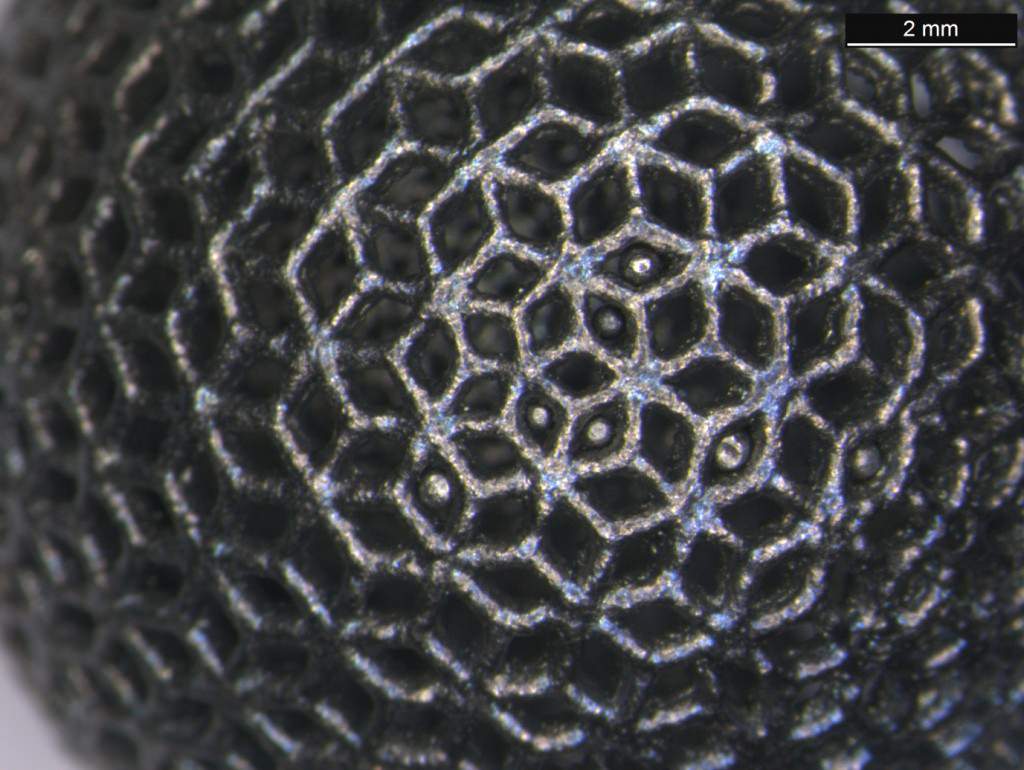Mining the Moon to extract its resources is a critical step on humanity's path into the solar system. One of the most common resources on the Moon is considered relatively valuable here on Earth - titanium. At $10,000 a ton, it is one of the more valuable metals used in various industries, such as aerospace and nanotechnology. So, could we utilize titanium from the Moon to supply Earth's economy with more of this valuable material? That question is the focus of a paper from researchers at Uppsala University in Finland.
It should come as no surprise that titanium, the universe's ninth most common element, is abundant on the Moon. Most of the Moon's titanium is contained in a mineral called ilmenite, which is also available on the Earth for only about $390 per metric ton. Ilmenite makes up as much as 20% of the volume of some rocks in the Sea of Tranquility, where the Apollo astronauts landed and collected samples.
To ensure they accurately represented the amount of potential titanium available at this location on the Moon, the authors, Renaud Merle, Mikael Höök, Valentin Troll, and Alexander Giegling, examined two different concentrations of ilmenite—3% for the general regolith in the area and 15% for the basaltic rocks the Apollo astronauts sampled. They then compared the potential output of a mine in this region to the Tellnes mine in their native Norway, one of the world's most productive.
Fraser interview Dr. Phil Metzger - one of the foremost experts on mining the lunar surface.Tellnes sits on top of one of the richest deposits of titanium in the world, with an estimated 575 million metric tons available for mining. While it is dwarfed in size by the scale of the Sea of Tranquility, its high concentration of 18% of TiO2 (titanium dioxide - the most commonly found form of the material) means it arguably has a high lifetime output and a baseline for comparing the output of a lunar mine. Importantly, it regularly produces 750 kilotons of ilmenite annually, representing about 5% of worldwide titanium production.
Operating the mine requires a large excavator and six large dump trucks. Overall, the excavator and dump trucks manufactured by Caterpillar represent almost 2,500 tons of material to be shipped to the Moon. The authors estimate that would require more than 40 launches of a Saturn V—about equivalent to how many it has taken to build the ISS fully.
Once the equipment is on the Moon, it must still be powered. Large diesel engines that currently power these mammoth machines aren't really an option on the Moon. On Earth, the total power required to operate all seven machines is about 11 MW, which the authors think could be met by a combination of solar energy and nuclear power. However, they don't mention how a large enough battery would affect their weight calculations.
Isaac Arthurs discusses the benefits of mining the Moon.Credit - Science and Futurism with Isaac Arthur YouTube ChannelSo, how effective would such a mining operation be if everything was in place, powered up, and running? There are several ways to measure effectiveness, but first, let's look at the total amount of titanium produced. The authors' calculations put the expected mined rate at about 500 kt per year—about 2/3rds the amount of Tellnes' output—but it should be noted that it will take up to 20 years to scale up to this level.
A lot can change in 20 years in terms of technology and material usage more generally, so ultimately, this paper doesn't make a convincing case for why it would be beneficial to mine titanium as an economical solution, especially since mines on Earth could quickly scale up their production to meet increased Earth-bound demand.
However, the mining process does have an added advantage—breaking apart ilmenite to release the titanium also releases oxygen, which is necessary for everything from rocket fuel to breathable air. So, instead of going after the titanium specifically, early lunar mining efforts might focus on the oxygen contained in the ilmenite and produce titanium—ostensibly the more valuable of the two materials back on Earth—as a side effect.
However, as the authors point out in the paper, it is doubtful that any such project would be undertaken in the next ten years. Until then, technologies will continue to develop until someday, someone will mine the first bit of titanium off the Moon. It just remains to be seen where this valuable material will be most useful once that happens.
Learn More:
Merle et al. - Assessing the plausibility of mining lunar titanium
UT - Researchers Developed a Test Bed For Separating Valuable Material on the Moon
UT - Finally, an Explanation for the Moon’s Radically Different Hemispheres
UT - The Moon Might Be More Metal-Rich Than We Thought
Lead Image:
A lunar mining facility harvests oxygen from the resource-rich volcanic soil of the eastern Mare Serenitatis.
Credit: NASA/Pat Rawlings
 Universe Today
Universe Today

